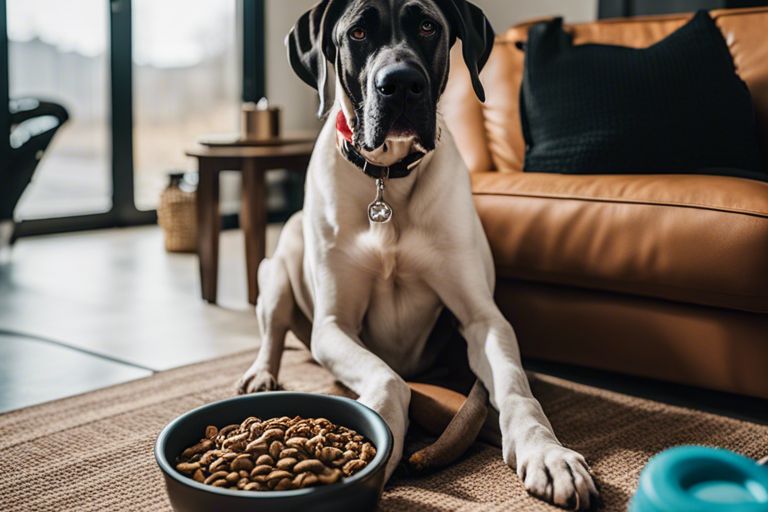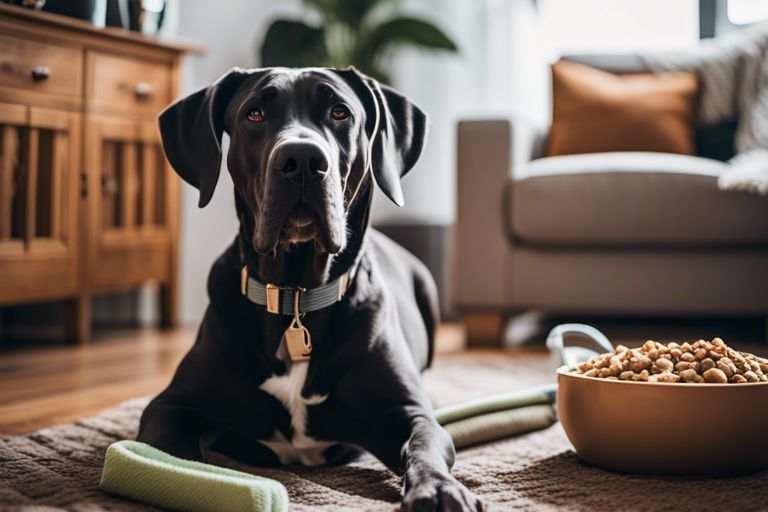This comprehensive guide aims to provide beginner dog owners with vital tips for owning a Great Dane, a majestic and gentle giant breed that requires special care and attention. From exercise needs to dietary requirements, grooming tips to training techniques, this guide covers everything you need to know to ensure a happy and healthy life for your Great Dane. Whether you’re considering adding one of these lovable giants to your family or have recently welcomed one into your home, this guide will help you navigate the ins and outs of caring for a Great Dane with confidence.
Key Takeaways:
- Consider their size and space: Great Danes are among the largest dog breeds, so it’s important to have enough space for them to move around comfortably in your home.
- Regular exercise is vital: These dogs require daily exercise to maintain their physical and mental well-being. A long walk or play session will help keep them happy and healthy.
- Proper training and socialization: Training and socializing your Great Dane from a young age is crucial to ensure they grow up to be well-behaved and friendly pets. Consistent training and positive reinforcement are key.
Getting to Know the Great Dane
Before bringing a Great Dane into your home, it’s imperative to get to know this majestic breed. Understanding their history, different types, and colors will help you provide the best care for your new furry friend.
History and Origin
One interesting fact about the Great Dane is that despite its name, it has a German origin. These gentle giants were originally bred as hunting dogs, later evolving into the beloved family pets we know today. They were even known for their ability to take down wild boars.
Different Types and Colors of Great Danes
Little is known about the different types and colors of Great Danes. Here are some common varieties you may come across:
- Harlequin
- Mantle
- Black
- Blue
- Fawn
Assume that Great Danes can come in various coat colors, each with its own unique charm and appeal. Importantly, understanding the different types and colors can help you choose the perfect Great Dane for your lifestyle.
| Harlequin | White base with irregular black patches |
| Mantle | Black coat with white markings on the chest and feet |
| Black | Solid black coloring |
| Blue | Steel blue coloring |
| Fawn | Light golden tan with black mask |
Preparing for Your Great Dane
Essential Supplies and Equipment
Little is more exciting than preparing for the arrival of your Great Dane. To ensure you are fully equipped to care for your new giant companion, you will need to invest in some important supplies and equipment. With their large size and strength, it is crucial to purchase a sturdy leash and collar, a comfortable dog bed that can accommodate their size, high-quality dog food specifically formulated for large breeds, food and water bowls that are elevated to reduce strain on their joints, and grooming tools suitable for their coat type.
Factors to Consider Before Bringing a Great Dane Home
Now, before bringing a Great Dane into your home, there are important factors to consider. This includes your living space – Great Danes require ample room to move around comfortably, so a small apartment may not be suitable. Additionally, their exercise needs are high, so you must have the time and energy to dedicate to regular walks and playtime. It is also important to consider the financial commitment of owning a large breed dog, including veterinary care, food, and grooming expenses.
- Ensure you have enough space for your Great Dane to move around comfortably.
- Be prepared to invest time and energy into their exercise needs.
- Consider the financial commitment of owning a large breed dog.
Caring for Your Great Dane
Step-by-Step Guide to Daily Care
Your Great Dane requires daily care to stay healthy and happy. Here is a simple breakdown of the important tasks you need to incorporate into your routine:
| Morning Routine | Evening Routine |
| Feeding with a balanced diet | Evening walk for exercise |
| Brushing to avoid matting | Toilet break before bedtime |
| Playtime for mental stimulation | Quality time together for bonding |
Health and Veterinary Care
Dane health and veterinary care are crucial aspects of owning a Great Dane. Regular check-ups, vaccinations, and preventative care are important to keep your pet in top condition. Remember to schedule annual visits with a trusted veterinarian to catch any potential issues early on.
Great Danes are prone to certain health issues such as hip dysplasia and bloat. It is vital to monitor their weight, diet, and exercise to prevent these conditions. Be proactive in seeking veterinary care if you notice any concerning symptoms or changes in behavior.
Training Your Great Dane
Tips for Effective Obedience Training
All successful obedience training with a Great Dane starts with establishing yourself as the pack leader. Remain consistent, patient, and use positive reinforcement techniques such as treats and praise to encourage good behavior. Break down commands into simple steps and practice them regularly in short training sessions to keep your Dane engaged and focused. Keep in mind, repetition is key in reinforcing good behavior with your Great Dane.
Socialization and Behavioral Management
For a well-rounded and well-behaved Great Dane, socialization and behavioral management are necessary from a young age. Introduce your Dane to different people, animals, environments, and experiences to help them feel comfortable and confident in various situations. Positive interactions will help prevent fear-based aggression or anxious behaviors in your Dane, ultimately leading to a more sociable and adaptable companion. Any behavior issues should be addressed promptly and consistently to prevent them from becoming ingrained habits in your Dane.

Living with a Great Dane
Understanding the Great Dane Temperament
Unlike their massive size, Great Danes are known for their gentle and affectionate nature. They are often referred to as “gentle giants” due to their friendly disposition and calm demeanor. Little training is needed to teach them proper behavior, as they are naturally well-mannered and eager to please their owners. However, early socialization is key to ensuring they interact well with other pets and people.
Pros and Cons of Great Dane Ownership
| Pros | Cons |
| Great family pets | High cost of care |
| Gentle and affectionate | Shorter lifespan |
| Good with children | Requires ample space |
| Low exercise needs | Potential health issues |
On Pros and Cons of Great Dane Ownership
Danes make great companions for families, as they are gentle, affectionate, and good with children. However, owning a Great Dane comes with its own set of challenges. They can be expensive to care for and have a shorter lifespan compared to smaller breeds. It’s important to provide them with enough space to move around comfortably and be prepared for potential health issues that may arise due to their size.
Summing up
In summation, owning a Great Dane is a rewarding experience that requires careful consideration and preparation. By following the necessary tips outlined in this beginner’s guide, you can ensure that your Great Dane lives a healthy and happy life. Remember to provide plenty of exercise, proper nutrition, regular veterinary care, and early socialization to help your Great Dane thrive. With patience, consistency, and love, you can form a strong bond with your gentle giant and enjoy many years of companionship together.
FAQ
Q: What are some important considerations before owning a Great Dane?
A: Before owning a Great Dane, it is crucial to consider the space you have available. These dogs are large and need ample room to move around comfortably. Additionally, their exercise needs are significant, so be prepared to provide them with daily physical activity. Finally, financial considerations are important, as Great Danes can have higher-than-average veterinary costs due to their size.
Q: How should I feed my Great Dane for optimal health?
A: Feeding a Great Dane involves some specific considerations. Due to their rapid growth, it’s imperative to provide a high-quality, large breed puppy food to support their development. As they mature, transitioning to an adult formula is recommended. Avoid overfeeding, as obesity can lead to numerous health issues in Great Danes. Consult with your veterinarian to determine the best feeding schedule and portion sizes for your dog.
Q: What kind of exercise routine is suitable for a Great Dane?
A: Great Danes are active, athletic dogs that require regular exercise to stay healthy and happy. Daily walks are imperative, but it’s also beneficial to engage them in more vigorous activities like running, hiking, or even swimming. Be mindful of their joints, as excessive impact can be detrimental to their long-term health. Mental stimulation is crucial as well, so consider incorporating training sessions or puzzle toys into their routine.

